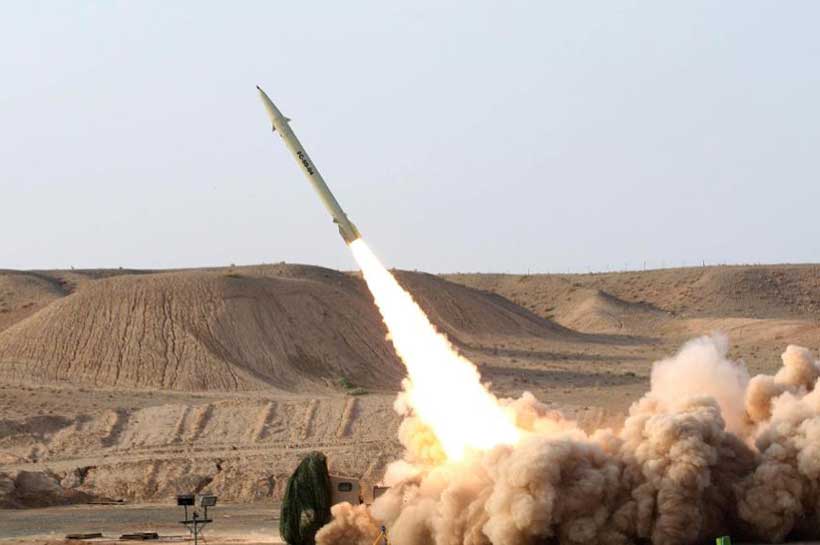The recent change in US administrations has spawned a lively debate about the potential path back to a deal with Iran, especially concerning the latter’s troubling nuclear ambitions. Some argue against reviving the 2015 nuclear deal while others counsel for a swift US return to it. But there is a big problem with an undemanding US revival of the deal. Over the past five years, the regime has displayed extremely disturbing behaviors that endanger the region, Europe, the United States, and the broader international community.
Indeed, Iran’s nuclear escalations and its burgeoning ballistic missiles program are major threats. But much more troubling is Iran’s ballistic behavior.
There are four significant hotspots where the Iranian regime is active. This means any return to the Iran deal cannot exclusively address technical nuclear issues. The geopolitics of the entire region have changed. For instance, in Yemen, Houthi militias control a large segment of a sovereign country, and they are armed by the Iranian regime, including missiles. They are at war with the legitimate government of Yemen, and they have had a terrible record of human rights abuses.
In Iraq, Iran has used its militias to establish control over the entire country, with some exceptions. These militias are not only controlling the government, major parts of the economy or the banks, they are engaged in suppressing the population. In the fall of 2019, hundreds of thousands of young Iraqis from all walks of life took to the streets to demand meaningful reforms. But they were met with lethal force. More than 700 Iraqi citizens of all communities have been killed by pro-Iranian militias.
The Iranian regime’s forces in Syria have brought in radical Shia militias from as far as Afghanistan. More than 700,000 people have been killed in that civil war. Five million Syrians have been displaced.
And, last but not least, in Lebanon, Hezbollah is armed and funded by Tehran, and its secretary general does not shy away from publicly announcing his group’s complete allegiance to the Iranian regime.
So, the Iranian regime is effectively involved in the quasi occupation of four Arab countries. All this means that there cannot be a swift return to an “Iran deal” without addressing the regime’s regional ambitions and destructive meddling, which have resulted in instability for Europeans and American interests alike.
Meanwhile both in European capitals and in Washington, there are major interests that echo calls for a quick return to the 2015 Iran nuclear deal. Absent in their inexplicable haste is any consequential consideration to pressing geopolitical demands.
Proponents of the Iran nuclear deal are eager to do business with Iran. There is nothing inherently wrong with that. But shouldn’t the cost of that decision be soberly evaluated before rushing back in?
Are there not important destabilizing factors that must be urgently addressed, including the deployment of ballistic missiles in the region, the preponderance of Iranian proxies in strategic hotspots, and persistent deadly attacks against Western allies in the region?
So, what should be done?
Any potential discussions with the Iranian regime must take into consideration the security of the Middle East as a whole.
First, regional security and the regime’s behavior must top the list of potential negotiation topics.
Second, the regime’s ballistic missile program should not proceed under the radar. The Houthi-fired missiles targeting Saudi Arabia and its oil facilities are designed and delivered by Iran. The missiles fired against the US and coalition forces in Iraq are also designed and delivered by Iran. And, Iran has deployed missiles in Syria, which are then aimed at Israel. Similarly, the Lebanese Hezbollah has boasted about having thousands of missiles in its arsenal.
Therefore, as an important step toward stability, the international community must ensure that the proliferation of these missiles is stopped, and they are removed from these countries.
Third, it would only be logical to include countries like Saudi Arabia and other impacted governments in the negotiation process because they bear the brunt of Tehran’s malevolence.
And lastly, international community should begin seriously engaging with the Iranian opposition. For the past three years, hundreds of thousands of Iranian citizens have loudly protested the ruling regime and its policies. There is another image of Iran that the world needs to acknowledge and engage. That’s exactly what the US policy is trying to do in Yemen, for example, by engaging both the Houthis and the legal government at the same time.
When dealing with the multilateral and strategic threats emanating from the Iranian regime, it is only natural to engage with the organized Iranian non-violent resistance, including representatives from the Iran protests and exiled leaders, particularly the very active National Council of Resistance of Iran (NCRI), and to hear their voices during any negotiation with Tehran.
The Iranian regime will be emboldened to continue its egregious behavior if it senses weakness in the international community’s response. By firmly addressing its ballistic behavior, responsible international actors can harness the strategic domestic and international reserves to curtail Tehran’s threats.


